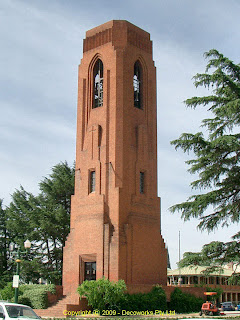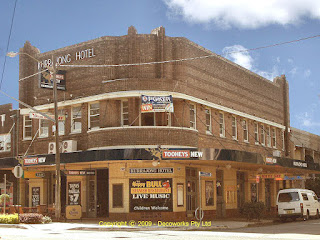Knickerbocker Hotel

The Knickerbocker Hotel located in Bathurst at 110 William Street is a famous Bathurst interwar Functionalist hotel was built in 1938. The Knickerbocker hotel is listed in the RAIA Registry of Significant 20th Century Buildings. Another view of the hotel An interesting feature is the glass brick feature up the building stairwell which allows natural lighting of what would otherwise be a dark and dingy stairway to the second floor guest rooms. The use of glass bricks was a very common practice among architects of the time.










